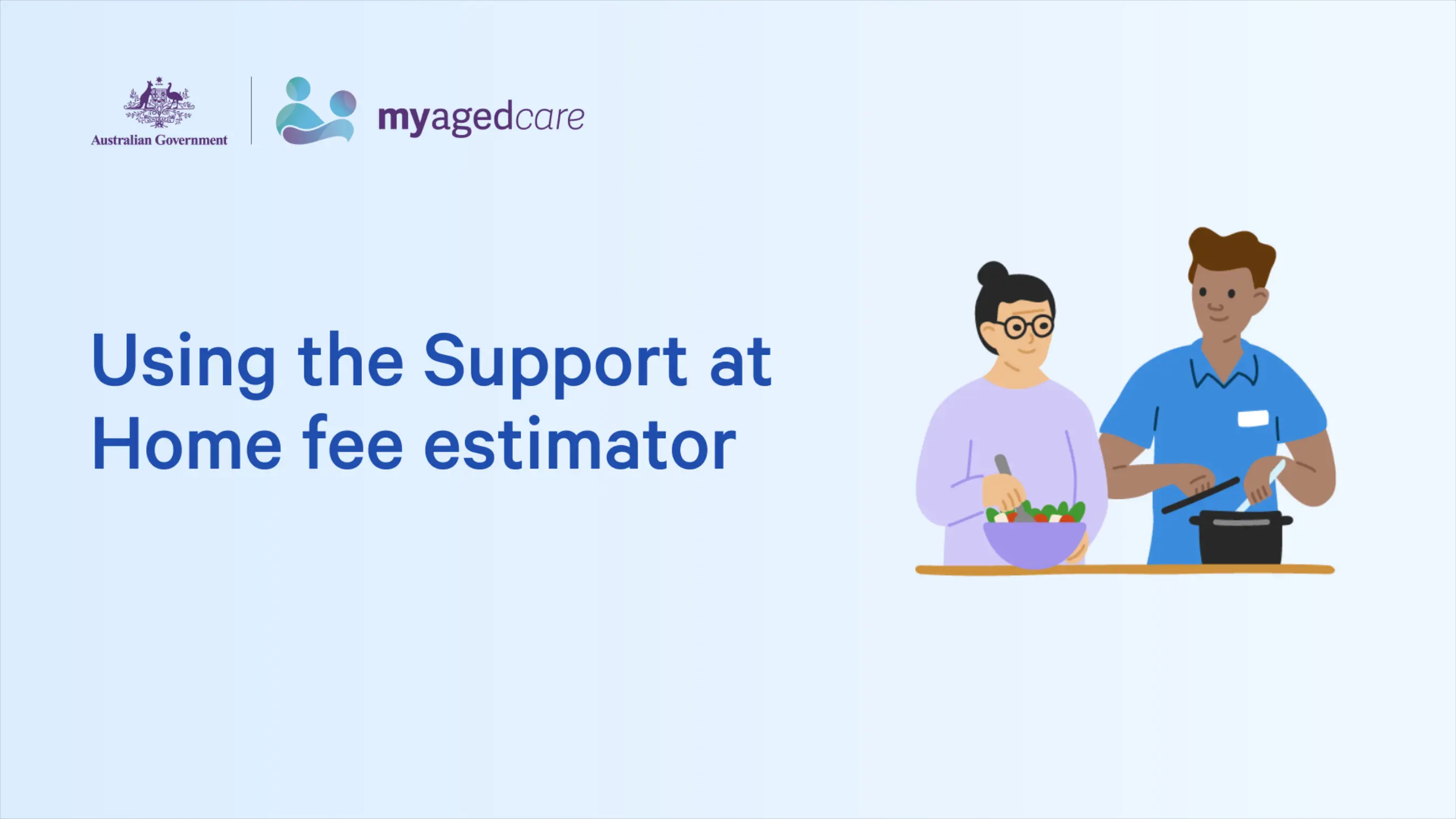If you are eligible for the Support at Home program, it’s important to understand what contributions you may have to pay. You should also know how much the government will contribute and how your budget works.
Providers set prices for services, so it's helpful to compare before choosing your provider. Having all the information upfront can help you make the right choice for your care needs and financial situation.
When you receive Support at Home services, you have a budget to pay for the services you need. Your budget depends on your assessed care needs and includes government funding and your contributions.
On this page
- How much will my services cost?
- What government funding is available?
- How much does the government contribute?
- How does a Support at Home budget work?
- Other types of government funding
- When will I get my funding?
- What contributions might I have to pay?
- How do I work out my contributions?
- Using the Support at Home fee estimator
- How do income and assets assessments work?
- What if I can’t afford to contribute?
- Seeking financial advice
How much will my services cost?
Each Support at Home provider charges a different amount for their services and care management. How much they charge depends on the prices they have set, the services you need, and when you need the services. These charges come out of your quarterly budget.
All Support at Home providers must publish their full price list of services online. It’s worth comparing providers to get the best value for your budget.
You can use the Find a provider tool to compare prices across providers. Once you’ve shortlisted providers, it’s a good idea to meet them and ask them any questions you need to.
Learn more about agreeing to Support at Home services and connecting with Support at Home providers.
What government funding is available?
Once you've been assessed and approved to receive Support at Home, you will be assigned a Support at Home classification. This government funding will help meet your assessed care needs.
Classifications include:
- ongoing services with:
- 8 different ongoing funding classifications
- 4 transitioned Home Care Package classifications (if approved on or before 31 October 2025)
- short-term services with 3 short-term pathways:
- Assistive Technology and Home Modifications (AT-HM) scheme
- Restorative Care Pathway
- End-of-Life Pathway.
Information on classification rates are outlined in the Schedule of Subsidies and Supplements.
How much does the government contribute?
The amount the government pays will depend on:
- your ongoing and/or short-term classification
- the supplements you’re eligible for
- the services, equipment and products you receive
- how much you contribute towards your care.
This means that when you pay a contribution, the government pays the remainder of the price of that service to your provider. The government pays for the full price of clinical supports.
How does a Support at Home budget work?
Other types of government funding
When will I get my funding?
You won’t be able to access Support at Home ongoing services until funding is available. How long you wait depends on:
- your priority group, as determined by the aged care assessor
- the date of approval on your Notice of Decision letter.
When wait times for ongoing services are longer than expected, you may be assigned interim funding. This gives you access to 60% of your approved funding to start receiving services. The rest of your budget is assigned as soon as funding is available.
If approved for the AT-HM scheme, your wait time will also depend on your priority group. In some instances, you may get access to AT-HM funding while waiting for ongoing funding.
You can get access to funding immediately if you have been approved for Restorative Care Pathway or End-of-Life Pathway.
Learn more about allocation of Support at Home funding.
What contributions might I have to pay?
Contributions will be different for everyone, and will be based on:
How do I work out my contributions?
Working out how much you pay is a key step when deciding what aged care services are right for you.
Using the Support at Home fee estimator

How do income and assets assessments work?
If you’re applying, or have been approved, for the Support at Home program, you may have to pay contributions based on your income and assets. You need your income and assets assessed to determine how much you might pay and how much the Australian Government will contribute.
For most people, the income and assets assessment is done by Services Australia. However, if you receive a means tested payment from the Department of Veterans’ Affairs (DVA), they will do the assessment.
You may have to fill in an income and assets assessment form to provide the financial details that Services Australia or DVA need to complete your assessment.
If you already receive a payment from Services Australia or DVA, they will use existing financial information for your income and assets assessment.
Once your assessment is complete, Services Australia will send you a letter that tells you your contribution rates for each service category.
Learn more about income and assets assessments.
What if I can’t afford to contribute?
If you are facing genuine financial hardship and can’t pay your contributions, you can ask to be considered for financial hardship assistance. This is also called a fee reduction supplement. If you are eligible, the Australian Government will pay some or all of your aged care costs.
If you are already in care and receiving financial hardship assistance, you don’t need to re-apply for it until the current determination expires.
Learn more about financial hardship assistance.
Seeking financial advice
It is recommended that you seek independent financial advice before deciding how to pay for your aged care.
For more information and guidance on financial matters, visit our financial support and advice page.